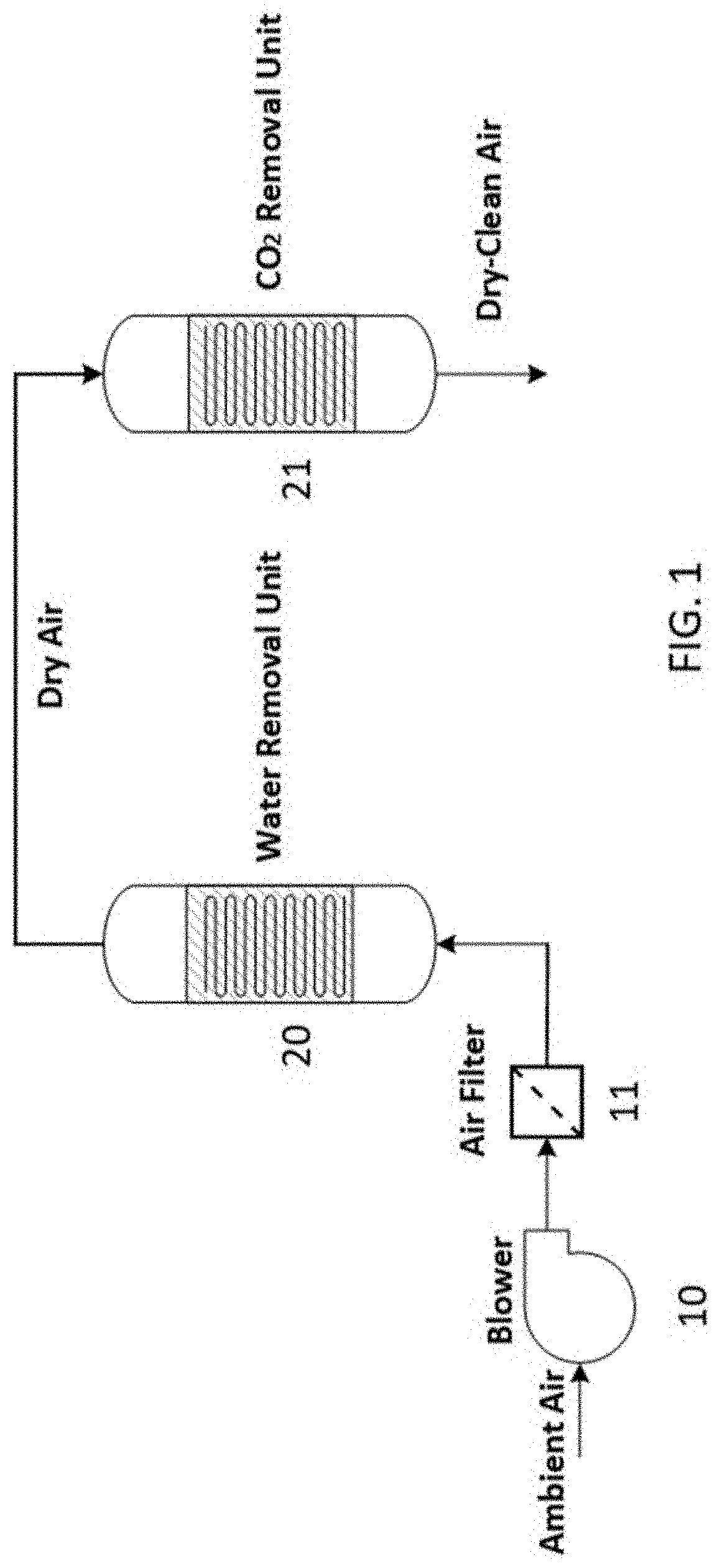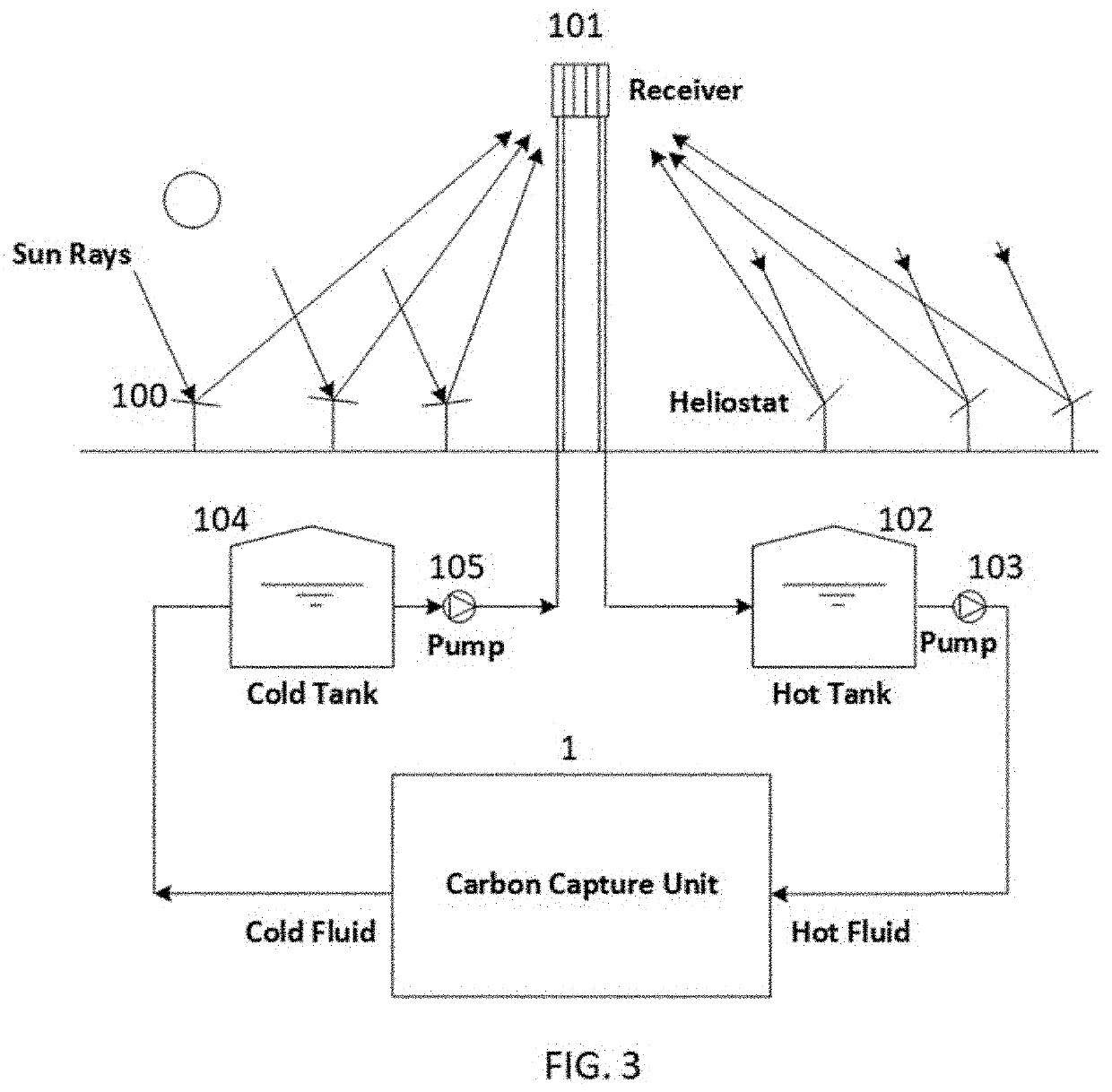Novel approach to cost effective carbon capture from air by producing carbon negative water
a carbon capture and air technology, applied in the direction of oxygen/ozone/oxide/hydroxide, energy input, separation processes, etc., can solve the problems of affecting the health of people, climate, and communities, requiring technological advancements and global investments, and posing devastating effects on climate, health, and communities. , to achieve the effect of cost-effective carbon capture, low carbon footprint and cost benefi
- Summary
- Abstract
- Description
- Claims
- Application Information
AI Technical Summary
Benefits of technology
Problems solved by technology
Method used
Image
Examples
Embodiment Construction
[0015]The process of capturing CO2 on solid sorbents is well-known. At room temperature and under dry condition, zeolites perform exceptionally well. However, the adsorption capacity deteriorates with an increase in temperature and in the presence of moisture. In other words, the available sites on zeolite are mostly occupied by water molecules when there is moisture in the air, leading to poor performance in CO2 capture. Furthermore, a large amount of energy is required to regenerate the sorbent by releasing the water captured in the process. Therefore, air must be dried first before entering the CO2 capture unit to about or less than 0.3% relative humidity (RH) and preferably less than 0.2% RH. FIG. 1 illustrates the basic operation of such a two-stage DAC process. Ambient air pressurized by a blower 10 passes through a filter 11 to remove particulates. The filtered air is then conducted to a water removal unit 20 to remove water to reduce the moisture content of the air before it...
PUM
| Property | Measurement | Unit |
|---|---|---|
| RH | aaaaa | aaaaa |
| temperature | aaaaa | aaaaa |
| concentration | aaaaa | aaaaa |
Abstract
Description
Claims
Application Information
 Login to View More
Login to View More - R&D
- Intellectual Property
- Life Sciences
- Materials
- Tech Scout
- Unparalleled Data Quality
- Higher Quality Content
- 60% Fewer Hallucinations
Browse by: Latest US Patents, China's latest patents, Technical Efficacy Thesaurus, Application Domain, Technology Topic, Popular Technical Reports.
© 2025 PatSnap. All rights reserved.Legal|Privacy policy|Modern Slavery Act Transparency Statement|Sitemap|About US| Contact US: help@patsnap.com



